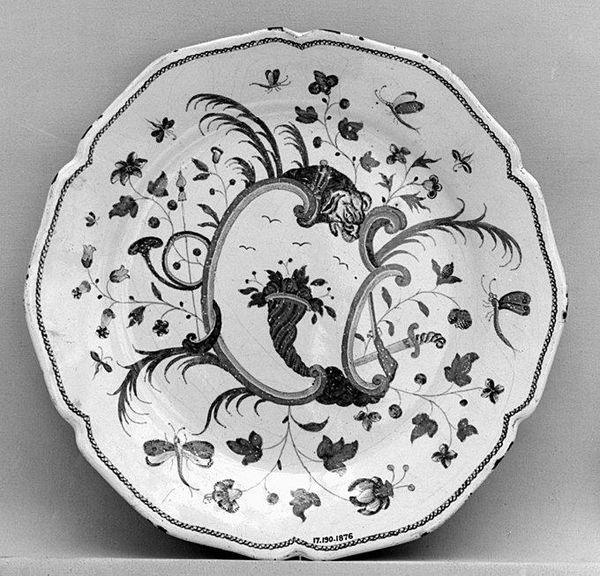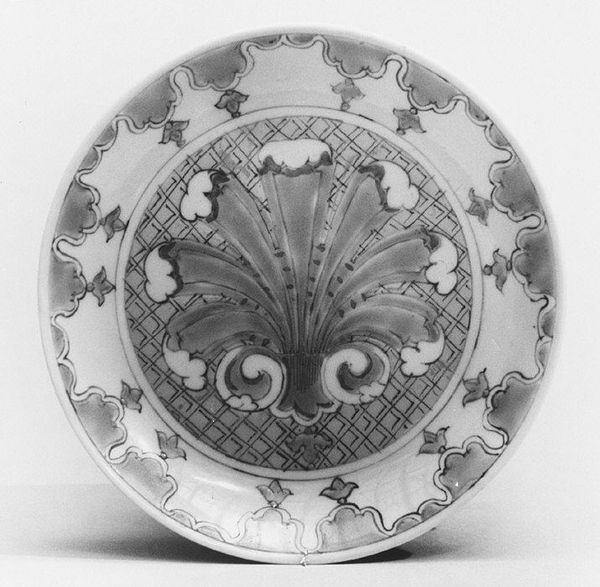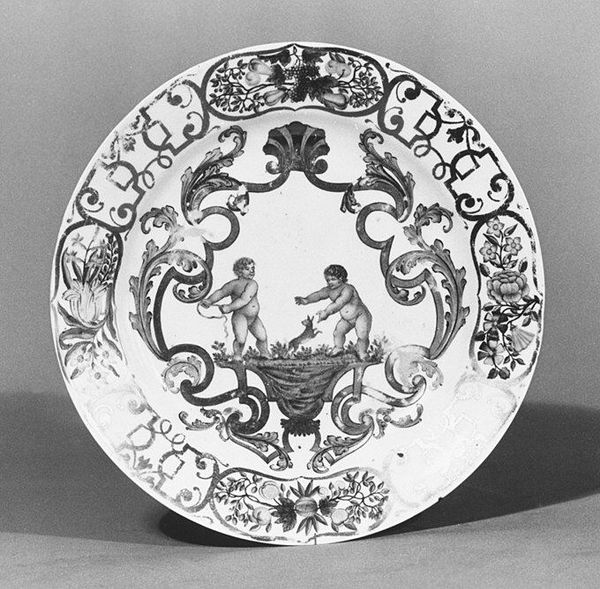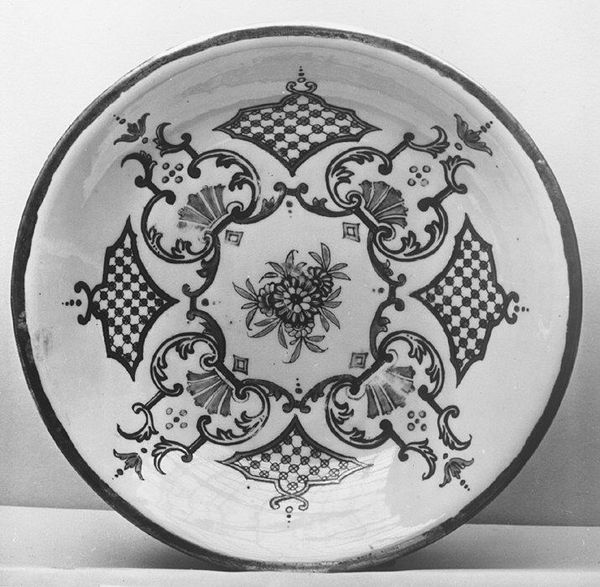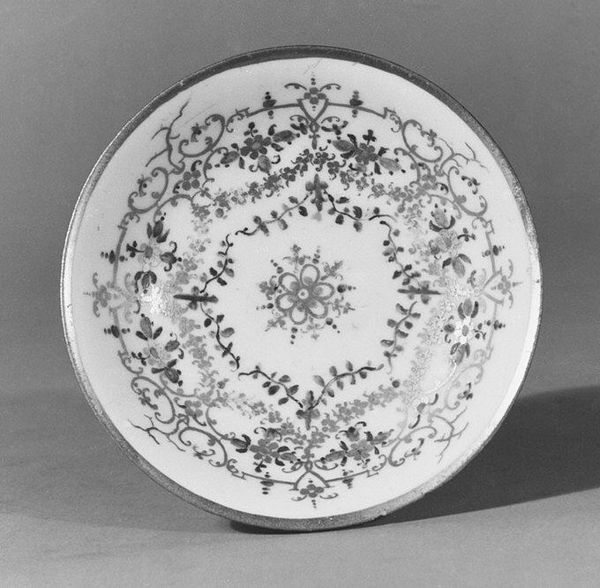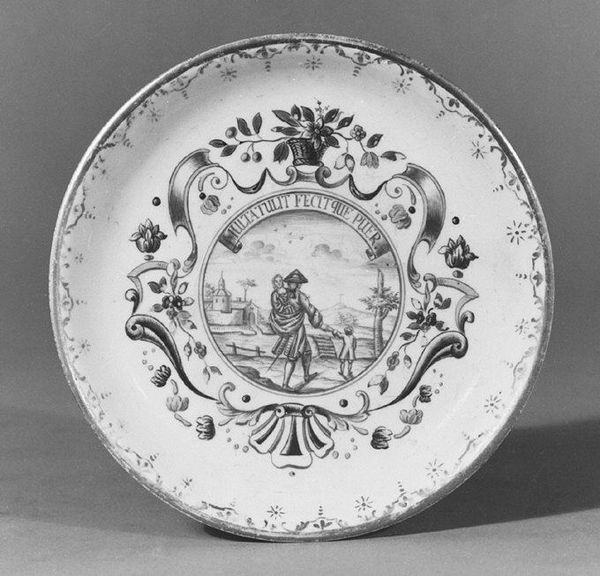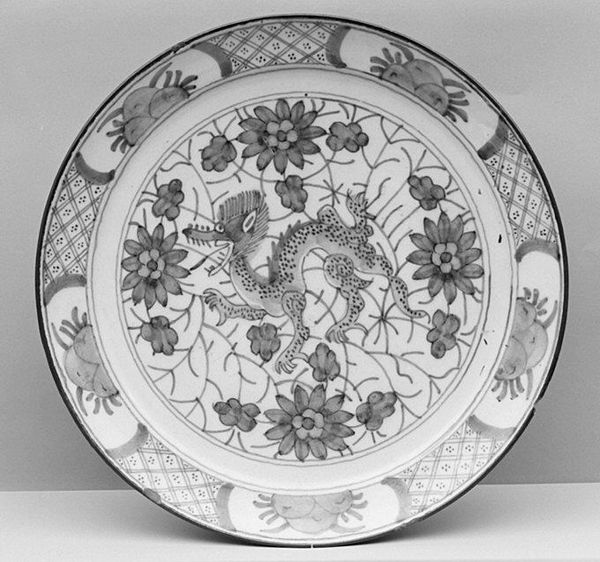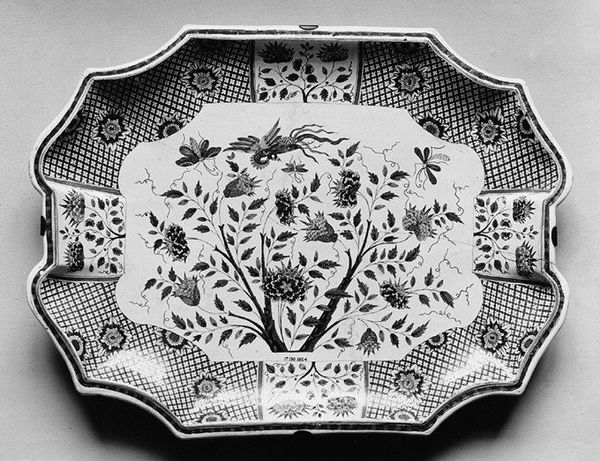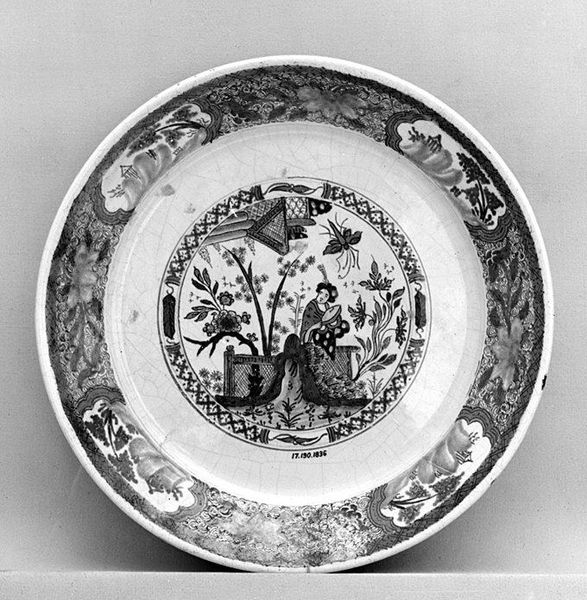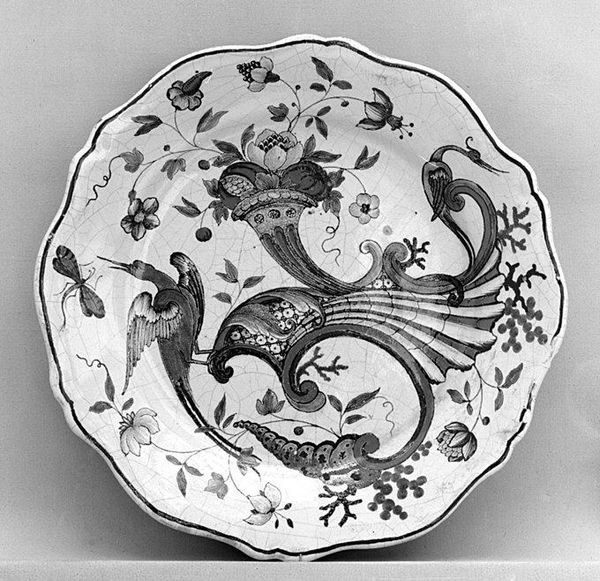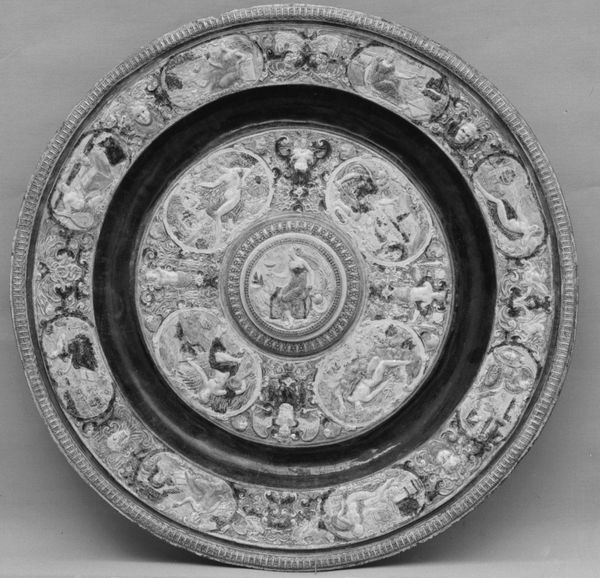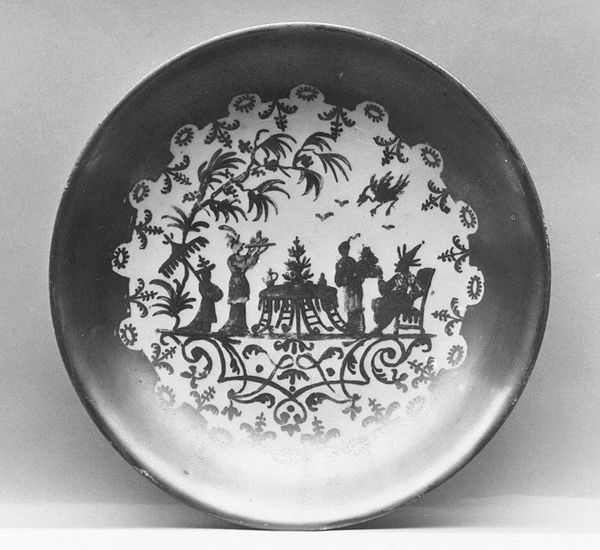
ceramic, porcelain
#
decorative element
#
ceramic
#
porcelain
#
decorative-art
#
rococo
Dimensions: Diameter: 8 in. (20.3 cm)
Copyright: Public Domain
This dish was designed by Cornelis Pronk in the first half of the 18th century, and made of tin-glazed earthenware, also known as Delftware. Delftware was produced to mimic Chinese porcelain, which was highly sought after in Europe at the time. But instead of using kaolin clay, which is necessary for true porcelain, Dutch artisans relied on readily available earthenware coated with a white tin glaze to give a similar appearance. Note the intricate decoration, carefully hand-painted with cobalt oxide to achieve its distinctive blue color. The decoration of Delftware involved a complex division of labor. Potters, painters, and kiln workers each contributed to the final product. The production of Delftware was a significant industry in the Netherlands, with workshops employing hundreds of workers. The popularity of Delftware reflects broader patterns of global trade and consumption, as Europeans sought to emulate and capitalize on the allure of Chinese ceramics. Considering this dish as an object of design and craft highlights the ingenuity and resourcefulness of Dutch artisans, while also raising questions about imitation, authenticity, and the cultural exchange of goods in a globalizing world.
Comments
No comments
Be the first to comment and join the conversation on the ultimate creative platform.

